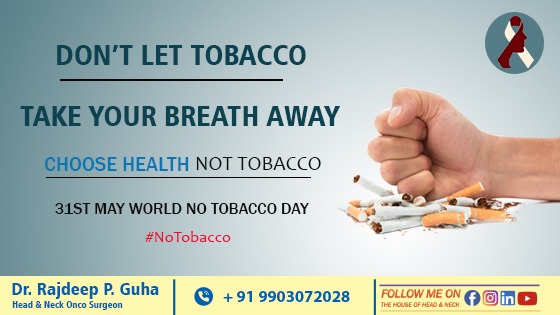Tobacco still stands tall as a single disease-causing element that could easily be prevented. However, the consumption of tobacco is far from getting under control.
To control the use of Tobacco, WHO dedicates the 31st of May as “World No Tobacco Day” and sets a theme for people to quit the addiction of smoking or consuming tobacco in any other way. The theme of this year is – Commit to Quit.
Tobacco – It’s Past & Present :-
If you dig into the history of Tobacco, it will take you to Native America which is known for cultivating Tobacco for the first time in around 1400-1000 BCE in Mexico. It was later introduced as a trade item and spread in multiple continents including Asia in the 17th century. Nevertheless, to say, the use of tobacco spread like a wildfire and has turned into an epidemic, that counts as one of the biggest public health threats around the globe.
GTSS or Global Tobacco Surveillance System focuses on the study of Tobacco consumption in multiple ways and measures to control it. It also researches the efficacy rate of Tobacco controlling measures, in different backgrounds.
Largest Tobacco Consuming Nation :-
You will be stunned to know that India, a small country happens to be the biggest consumer of Tobacco in the world. Tobacco here is sold and consumed in the forms of the smoked form (cigarettes, hookas or bidis) or the smokeless form (Khaini, zarda, betel quid or gutkha).
Tobacco addiction is not confined to smoking, many users chew or consume tobacco in other forms of addiction. The addiction to tobacco kills around 8 million people all over the world annually. No matter how you consume tobacco it always counts as a threat.
Diseases Caused By Tobacco :-
Whether or not you consume tobacco, you are never free from the health hazard it causes. Way too many people get affected by passive smoking around the world. Here are some diseases that are caused by tobacco –
- Cancer – Laryngeal, oral/nasal, liver, pancreas, kidney, cervix, urinary bladder and cancers of the respiratory tract.
- Respiratory Disease – Asthma, tuberculosis, COPD.
- Cardiovascular disease – Stroke, hypertension, Coronary artery disease, and atherosclerosis.
- Effect on pregnancy – bleeding during pregnancy, ectopic pregnancy, miscarriage, premature delivery, stillbirth, abnormalities of the placenta
- Effects on newborn – congenital abnormalities, increased risk of allergies, high blood pressure in childhood, the likelihood of obesity, stunted growth, poor lung function, asthma in childhood
- Other – worsening of rheumatological conditions, kidney damage, eye macular disease, dental caries, diabetes, inflammatory bowel disease, erectile dysfunction
Combating with Tobacco Epidemic :-
In 2007 WHO came up with a completely cost-effective policy to stop the tobacco epidemic. It is acronym as MPOWER which is short for –
M- Monitor tobacco use and prevention policies
P- Protect people from tobacco use
O- Offer help to quit tobacco use
W- Warn about the dangers of tobacco
E- Enforce ban on tobacco advertising, promotion and sponsorship
R- Raise taxes on tobacco
This has been proved to be extremely effective in India. States like Kerala, Chandigarh and cities like Shimla have declared themselves ‘smoke-free’. Smoking in public, in these states, are illegal.
Concluding Thoughts :-
When it comes to quitting tobacco it is a matter of will. Nicotine and anti-depressant can prove to be helpful for chronic smokers. Let’s hope 2021’s theme for quitting tobacco is a complete success.

